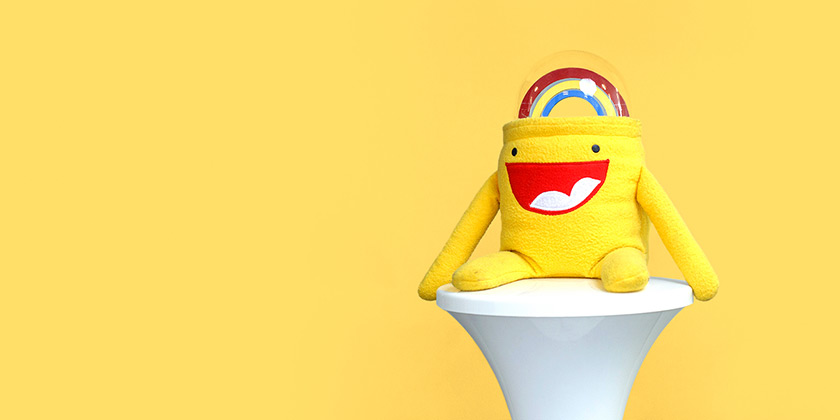We are conference aficionados at Kyan. As well as hosting our own, we try to visit as many as possible. This year already we’ve been to Bath Ruby, Pittsburgh’s RubyConf 2018, TNW 2018, Diversity in Technology, Accountex… and, of course, WXG. Rob Edwards reminisces and shines a spotlight on UX London’s TENTH year!
I went to UX London 2018 — the conference’s 10th outing and my ‘first time’. It felt like a good year to see what it’s all about. Kyan however are old hands at UX London, attending as far back as 2009.
No surprises, it’s a conference with a focus on UX design and UX designers. It’s held over three days, with a rich array of speakers and high-profile brands. The days were split into various themes; day one was product focus, day two was users, and day three looked towards what the future holds. The first day was by far my favourite, and it gave me plenty of food for thought (and food, too). Enjoy!

Designing products
Some of the stand-out talks of the day were the ones that looked internally into organisations, a common theme across the 2018 conference calendar. Put simply, to create better products you ultimately need to create better teams.
Telling stories
Aaron Walter explained how you need to ‘tell stories of a product’ so that others who might then engage with it can understand the problem that is being solved. For example: a Facebook team developing on the platform for users in India created a mini-documentary that could be shared outside of the core team, gaining understanding and empathy from the wider company on the challenge.
I envisage that these same stories could be applied to the whole mission statement of your organisation — useful for on-boarding new team members for example. On a similar note, a quote shared from Spotify’s Stanley Wood has been ringing in my ears ever since I heard it.
“Being able to sell the problem to activate change is a much easier route than selling the solution.”
Paul Addams spoke bluntly and amusingly on the problem with UX designers inside organisations. First looking at how the field has too often ignorantly positioned itself in the middle of all areas of a business.

Instead, the UX teams are a cog like any other, and even more humbling is that the sales and support teams of an organisation typically have far more interaction with users and understand them better than the UX teams believe they do — wake up, UX folk!
Therefore, reasons for developing or shipping products or features is a multi-disciplinary practice. He shared his example from within Intercom on howdifferent teams come together to collaborate; Sales working with Project Management, Project Management working with Research, Research working with Design and so on.

It’s a numbers game
Kate Rutter, like Paul, gave us some hard truths about ourselves… “we don’t understand the numbers”. She showed us in many ways where and how to track our products. I felt a bit silly as I was trying to take a picture of almost every one of her lo-fi slides, which, as she put it “don’t make pretty but pointless, but make ugly but useful”. I would say her slides and presentation certainly fit into the latter — an extremely useful talk.
Next we heard from Navin at Netflix. His talk was based around A/B testing, with a core message.
“Thinking of product development as a series of experiments leads to stronger designs.”
The number one thing people say before signing up is wanting to know the full catalogue. This was A/B tested, and the result was that after five variations, the non-catalogue (free trial) was the bigger draw. The catalogue was a distraction before the full Netflix experience.

To solve the user need, they simply provided a non-interactive background image that showed popular movies and TV shows that people may want. Users said “Yes, this is what I want”. However, during testing, users got bogged down with looking at the catalogue.
The best of the rest
Other highlights included hearing from Louise Downe at GDS (Government Digital Service), who are now the single largest design team in the UK, with over 950 service designers responsible for carrying the organisation forward and making content more readable for users.
Cherly Platz, Design Lead at Microsoft, addressed voice UI’s opportunities and flaws, and the need to standardise all voice control interfaces so that every company doesn’t have its own response to something, such as cropping. For example, “I want to make this image smaller” = “Can you take some off the sides”.
I also enjoyed Kerry Bodine’s talk, ‘From UX to CX to Service Design’. Kerry and her company Kerry Bodine & Co are experts in customer experience, so we were treated with a real deep-dive into how language and company culture can play a huge part in CX. For instance, organisations with better employee engagement see higher customer satisfaction. Companies effective at CX use metaphors such as ‘front-of-stage’ and ‘behind stage’, and may refer to the customer journey as simply ‘our journey’. Overall, there needs to be a cultural change within a company for true CX to come into play.

All-in-all, UX London was an incredibly engaging few days, with some serious discussions and action points coming to the boil in the world of UX. For me personally, I came away with a new-found energy and willingness to see how UX works in the development process with teams that may typically get overlooked or excluded from the discovery period, such as sales teams, customer service teams. We can’t assume we know best. Other departments of course have closer links to customers than the design team ever will.
We must work with them and redefine our understanding of what ‘they’ are. To quote Paul again...
“If we have got a seat at the table, then we need to grow up.”



